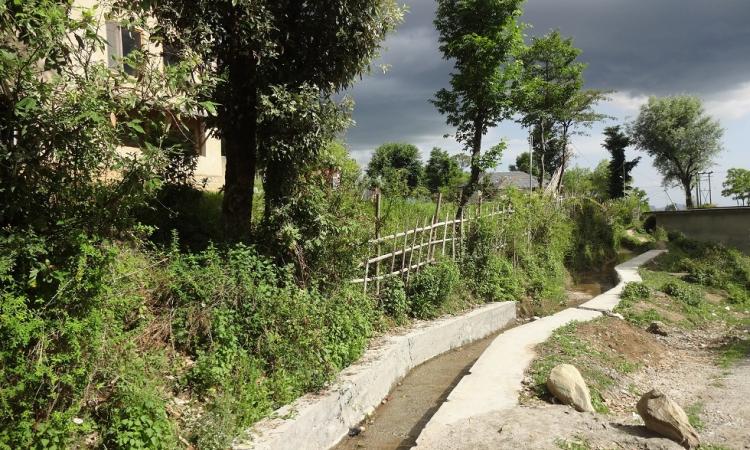
The Hindu Kush Himalayan region (HKH) is the source of 10 major rivers and is often referred to as the water tower of Asia. However, communities living in this region and downstream face frequent seasonal water scarcity and flooding due to high variations in rainfall. This causes too much water in the wet season resulting in floods and other natural disasters, and too little rain in the dry season resulting in droughts and crop failure. Climate change is predicted to further worsen these problems with increases in rainfall variability and occurance of extreme events.
The paper titled 'Governance and management of local water storage in the Hindu Kush Himalayas' published in the International Journal of Water Resources Development, argues that enhancing water storage seems to be the most suitable method to adapt to water scarcity in the region and build resilience to low water availability. However, the challenge is to understand how to store the massive quantities of rain falling during the four-month monsoon period so that it can be used over the entire year.
Besides hydropower and dams which have a number of disadvantages, the answer lies in the small scale and very small scale local storage systems that are prevalent in the area and directly benefit those who establish them. These systems and the associated institutional arrangements can help in building community resilience and can greatly help in storing water at times of low requirement and high availability and use it at times of high requirement and low availability.
Local systems of water storage and water governance
The paper argues that many of these local systems continue to be ignored by government strategies, and may even be discouraged by the rules and regulations of more centralised approaches. The article critically analyses some of the local systems of water storage from the perspective of local water governance and institutional barriers in the Himalayan region that include:
- Glacier meltwater harvesting in the trans-Himalayan region, which includes the kuhls (diversion channels) used in the Spiti Valley of Himachal Pradesh to tap distant glaciers for water and supply it to a village
- Tapping mountain water in the western Himalayan region via a kuhl (channel), which typically irrigates an area of about 20 hectares
- Stream sharing in the western Himalayan region where mountain streams are tapped by two different communities lying upstream and downstream, with institutional arrangements developed to operate the system
- Water harvesting reservoirs in a natural drainage channel in the western Himalayan region that involves the use of ponds for domestic use in Jammu villages in northwest India
- Water harvesting and watershed management in the northeastern hill region that includes commonly used village ponds in India’s north-eastern hill region.
The paper informs that local water storage for building climate resilience continues to be highlighted in the policies of the governments of countries in the Himalayan region, which can help make supplementary funds available and provide technical support where needed.
Barriers to be overcome to harness the full potential of water storage in the HKH
Several biophysical and institutional barriers need to be overcome to fully harness the potential of water storage in the HKH. On the biophysical side, there are knowledge gaps in scientific information about groundwater aquifer systems, wetlands, watershed management, and glaciers. This information can supplement local knowledge of communities, as historical experience alone is no longer enough to address the changed situation under climate change and the need for adaptation.
On the institutional side, there are a number of barriers encountered while planning or designing institutional arrangements for water governance and management.
A critical analysis of the case studies indicates that:
- Active participation of local users at all stages is vital to the success of local water governance and management, irrespective of the type of management, community, private, or government.
- It is important to ensure that governmental interventions do not interfere with the already existing negotiating mechanisms that are a part of the traditional institutional arrangements
- Local non-governmental organisations can play a valuable role in forming and activating community organisations to ensure representation of social structures, and empowerment of women and disadvantaged groups
- Local government institutions, such as village councils and village assemblies, play an important role in resolving disputes related to water use rights. There are many traditional water use rights, and local government may have a role to play in settling water use disputes, channelising funds or, managing local water storage facilities thus highlighting the need for capacity building of local government institutions.
- Proper watershed management and consideration of upstream-downstream linkages are very important for the success of local water storage initiatives. Watershed management committees, government agencies, or non-governmental organisations can play an important role in helping community organisations use scientific information in their water management decisions.
Please download a copy of the paper below.
/articles/local-water-storage-hindu-kush-himalayas